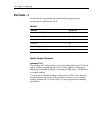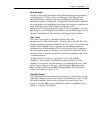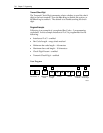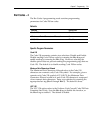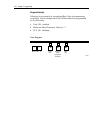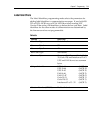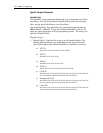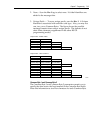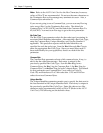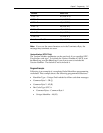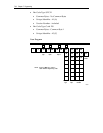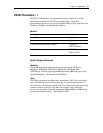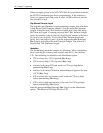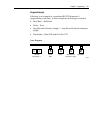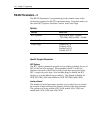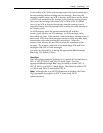
7-36 Chapter 7: Programming
Note:
Refer to the
ASCII Code Chart
for the Hex Characters; however,
values of 20 to 7E are recommended. Do not use the same characters as
the Terminator Byte or the message may terminate too soon. Also, a
Common Byte cannot be 00.
If you are not going to use a Common Byte, you can scan any Hex tag
twice except Hex 0 or the Terminator Byte value. The default for
Common Byte 1 is 5D (ASCII ]) and the default for Common Byte 2 is
42 (ASCII B). You must scan four tags to go to the next parameter.
Bar Code Type
The Bar Code Type parameter selects the bar code type for entering its
associated label identifier information. After entering a Bar Code Type,
enter the Common Byte, Unique Identifier, and Version Number if
applicable. This procedure repeats until the label identifiers are
specified for each bar code type. Scan the Hex 0 through Hex 7 tag to
enter the appropriate Bar Code Type. Since you must select each of
these individually for your application, there is no default for this
parameter.
Common Byte
The Common Byte parameter selects which common bytes, if any, to
add to the bar code data message. Each entry is unique to the
previously specified Bar Code Type. Scan the Hex 0 tag for no
Common Bytes, the Hex 1 tag for Common Byte 1, the Hex 2 tag for
Common Byte 2, or the Hex 3 tag for both Common Bytes. The default
for this parameter uses Common Byte 2 as a suffix for Code 39,
Code 128, and Interleaved 2 of 5 bar code data. UPC and EAN bar
codes do not use Common Bytes.
Unique Identifier
The Unique Identifier parameter permits you to specify the data sent to
the host terminal in the Unique Identifier field. Each entry is unique to
the previously specified Bar Code Type. Enter this data as two Hex
characters using recommended values of 20 to 7E (Refer to the
ASCII
Code Chart
). The following are the default values.



